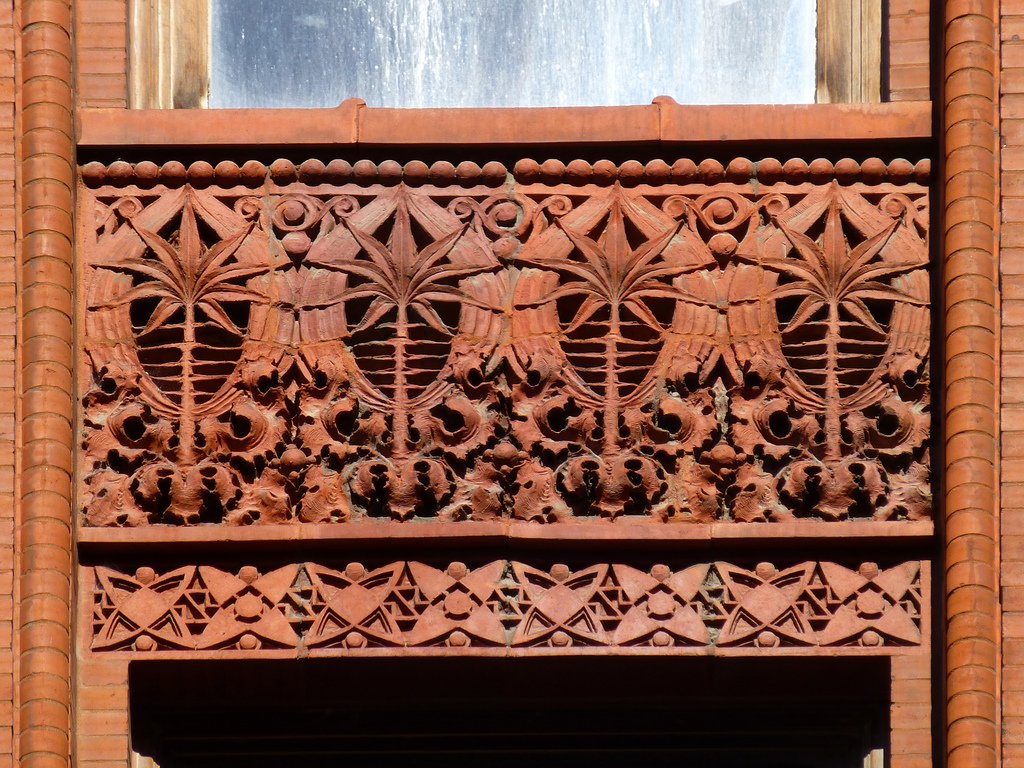#7223. Art Nouveau Terracotta Facade Ornament with Floral Motifs

The image shows a fragment of a terracotta decorative element on the facade of a historic building in Art Nouveau style with Neo-Gothic elements. This is an excellent example of architectural ornament made of fired clay, demonstrating the high craftsmanship of the early 20th century.
The ornamental composition consists of several tiers with various motifs. The central band is adorned with stylized palm leaves that rhythmically repeat, creating visual harmony. Between these plant elements are intricate swirls and spirals typical of Art Nouveau. The lower band contains geometric ornament with triangular motifs and small decorative elements.
The composition is framed by vertical columns with a characteristic cylindrical form, giving the structure architectural integrity. The entire work is made of terracotta in a warm reddish-brown shade, which was a popular solution for facades of the late 19th and early 20th centuries, especially in urban architecture of that period.
The detailing of the ornament shows the high quality of molding that allowed the implementation of a complex openwork structure with numerous apertures, creating an interesting interplay of light and shadow on the building facade.